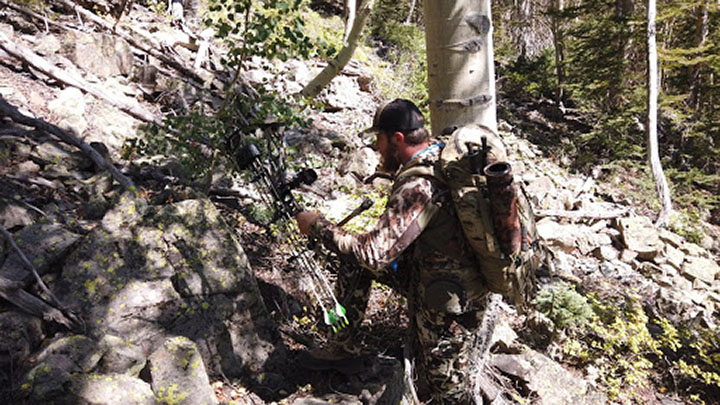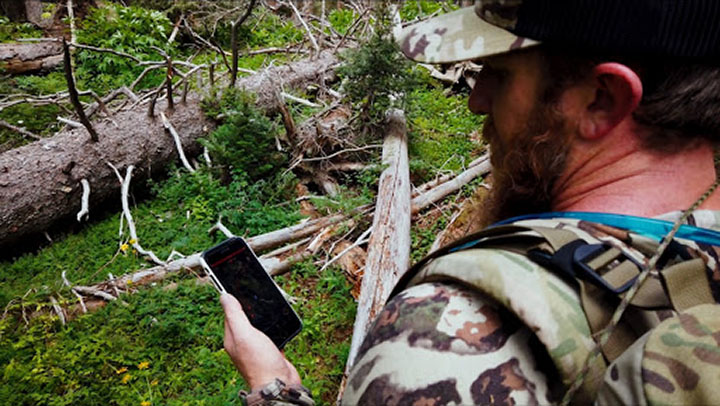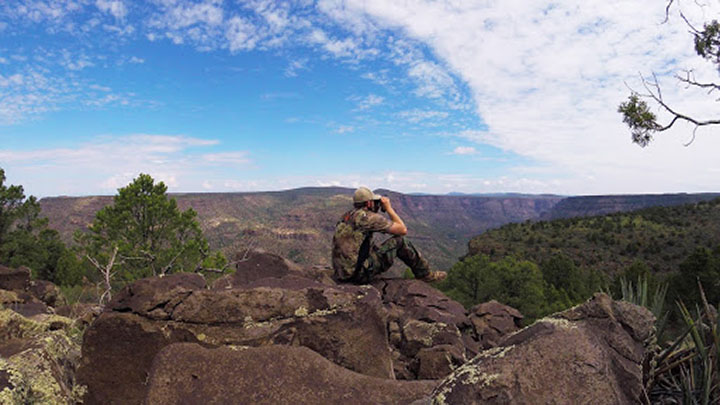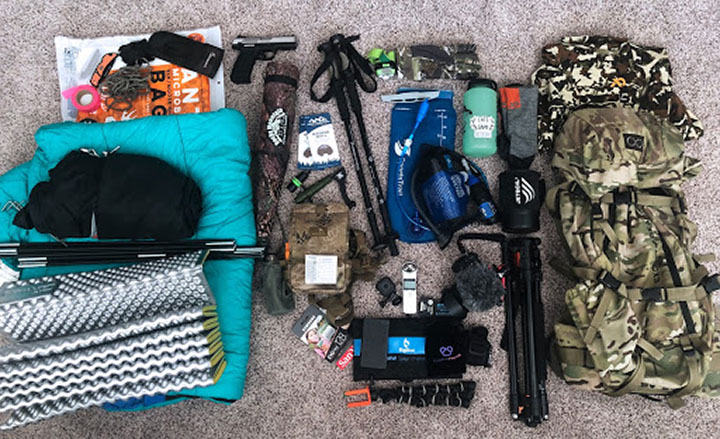Planning an Out of State Western Hunt
There are few adventures as rewarding to a bowhunter as an out-of-state hunt. Traveling half-way across the country, stepping out of your truck into the middle of a wilderness you’ve never seen before, and then grabbing your gear and heading out to harvest your quarry – it’s hard to describe the exhilaration an out-of-state hunt can provide!
At the same time, if you’ve never hunted another state before, and if you’re attempting a DIY hunt, few things can feel as daunting when you begin your planning; a new state means learning new laws and regulations and figuring out where the animals might be in a place you’ve only seen from your computer. There are so many questions to be answered that it can certainly convince a would-be out-of-state hunter to give up and stay home.
But, with a little bit of research and a willingness to get out and try, a DIY out-of-state hunt is well within reach of most hunters.
Where to go?
First things first: what animal do you want to hunt? If you’re just starting to plan your adventure and it’s already late spring, you’ve missed the draw application deadlines, and you’ll be limited to over-the-counter (OTC) opportunities. Fortunately, many states in the West have terrific OTC options available. Colorado is known for its generous OTC elk tags. Montana has OTC elk, deer, and antelope options available. Arizona provides a unique winter hunting experience with OTC deer tags in January (your buddies can be freezing back home, and you can be chasing rutting bucks through the desert in 70-degree weather). The West is packed full of more opportunities than could be listed in this article, so the best first step is to decide which species you want to hunt and begin looking through each state’s Fish & Game website to explore your options.
Once you’ve narrowed it down to a state and season you plan to hunt; you’re now faced with the prospect of figuring out where in that state to go. If your tag is isolated to one unit, it simplifies things a little bit. However, many OTC tags have a list of open units in which you can hunt, which makes isolating a single spot on a map that much more difficult. The best place to start is choosing a couple of units that have the best numbers for what you’re looking for (harvest success, trophy potential, etc.) and start there. Then, turn to Google Earth or your preferred mapping service and start marking spots within that unit that look like good habitat for what you’re chasing.
Can I afford it?
Other than the daunting amount of unknowns to figure out, the prospective cost of an out-of-state hunt is probably the most common thing that will hold hunters back. Tags cost more for out-of-state hunters than residents. You’re also now factoring travel expenses for what may very well be a 1,000+ mile trip. But, with proper planning and a few budget-conscious decisions, an unforgettable out of state hunt can be pretty affordable.
The tag/license should be your biggest cost. If you’re going with a buddy or two, you can all split the gas expenses. If you pack a cooler of travel food rather than stopping at a restaurant every few hours, you’ll save a fortune on food. And, since you’re probably already heading out with a truckload of camping gear, sleep at a campground instead of a hotel if your trip involves multiple days on the road. As long as you can resist the urge to justify upgrading your entire hunting kit for this trip, an out of state DIY hunt can actually be pretty reasonable. As a specific example, a Colorado OTC elk hunt can be done for around $1200-1500 depending on how far you have to travel. I know that still sounds like a hefty chunk of change, but if you plan far enough ahead, a hunter could set aside $100/month for a year and have their elk hunt totally covered.
Okay, but what gear do I NEED?
This could obviously be an article all by itself, but let’s try to hit the true necessities to make sure you’re able to hunt effectively out west. Obviously, the full gear list will change depending on the type of hunt you’re planning (hunting from your travel-trailer vs. backpacking deep into the backcountry, for instance). No matter your hunting style, these few things are definitely on the need list:
Good Boots: The mountains are steep out west, and most of the animals like to hang out in hard-to-reach places. Get yourself some good boots (make sure you break them in well before you hit the trail), and prepare to log some miles while you’re out there.
Legal Archery Gear: Some states out west have very specific rules on the types of equipment you can have on your bow. Some don’t allow expandable broadheads, so make sure you’re dialed-in with some rock-solid fixed blades (VPA Broadheads) if you’re heading to one of those states. In some places, electronic sights and even illuminated nocks are forbidden, so make sure you understand the regs of that state and that your archery setup is legal.
Good Optics: If you’re chasing certain species (mule deer or antelope come to mind), you may be doing a fair amount of spot-and-stalk hunting. If you’re coming from a part of the country where binoculars are an afterthought, you’ll want to make sure you have adequate optics. These don’t have to break the bank, but I’d recommend something with at least 10x magnification. Consider bringing a tripod for long glassing sessions, and buy the best glass you can afford — your eyes will thank you.
Just Do It
At the end of the day, there’s no possible way to know everything you’ll encounter or to prepare for every potential scenario. Do as much research as possible, but at the end of the day, you just have to go. Right now it’s early summer — there’s absolutely still time to put a plan together and get out there this fall. Start researching. Keep practicing. Dial-in your fitness a bit. And just go for it. When you’re on the road back home (with or without a punched tag), I can almost guarantee you’ll already be thinking about next year’s out of state hunt!
Vantage Point Archery was established in 2008 in Fort Wayne, Indiana. Our company and owners started with a passion for the outdoor sports and recreation industry. Having an initial passion for this industry and specifically bow hunting, members of the VPA team knew that there was a demand in the market for better quality archery products. This demand came not only from other colleagues within our networks, but was primarily fueled by our own desires to utilize the highest quality equipment for our archery needs. Understanding that it was easy to scrutinize other products on the market, we knew we also wanted to be part of the solution to this issue. Uncertain of what initially had to be accomplished and what kind of time commitment would be needed, the VPA team set off on our course to fix this problem.






